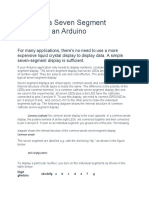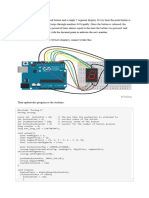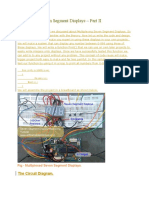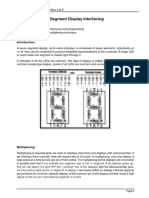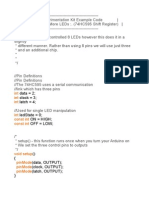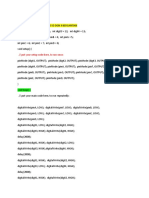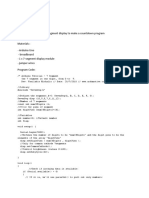0% found this document useful (0 votes)
39 views1 pageArduino 7-Segment Display Guide
The document provides an example of controlling a 7-segment display using an Arduino Uno and a shift register. It includes code that defines the necessary pins, an array for the digits 0-9, and a loop function that displays each digit sequentially with a one-second delay. The setup function configures the pins as outputs, allowing for proper communication with the display.
Uploaded by
Emin HalilovicCopyright
© © All Rights Reserved
We take content rights seriously. If you suspect this is your content, claim it here.
Available Formats
Download as TXT, PDF, TXT or read online on Scribd
0% found this document useful (0 votes)
39 views1 pageArduino 7-Segment Display Guide
The document provides an example of controlling a 7-segment display using an Arduino Uno and a shift register. It includes code that defines the necessary pins, an array for the digits 0-9, and a loop function that displays each digit sequentially with a one-second delay. The setup function configures the pins as outputs, allowing for proper communication with the display.
Uploaded by
Emin HalilovicCopyright
© © All Rights Reserved
We take content rights seriously. If you suspect this is your content, claim it here.
Available Formats
Download as TXT, PDF, TXT or read online on Scribd
/ 1









